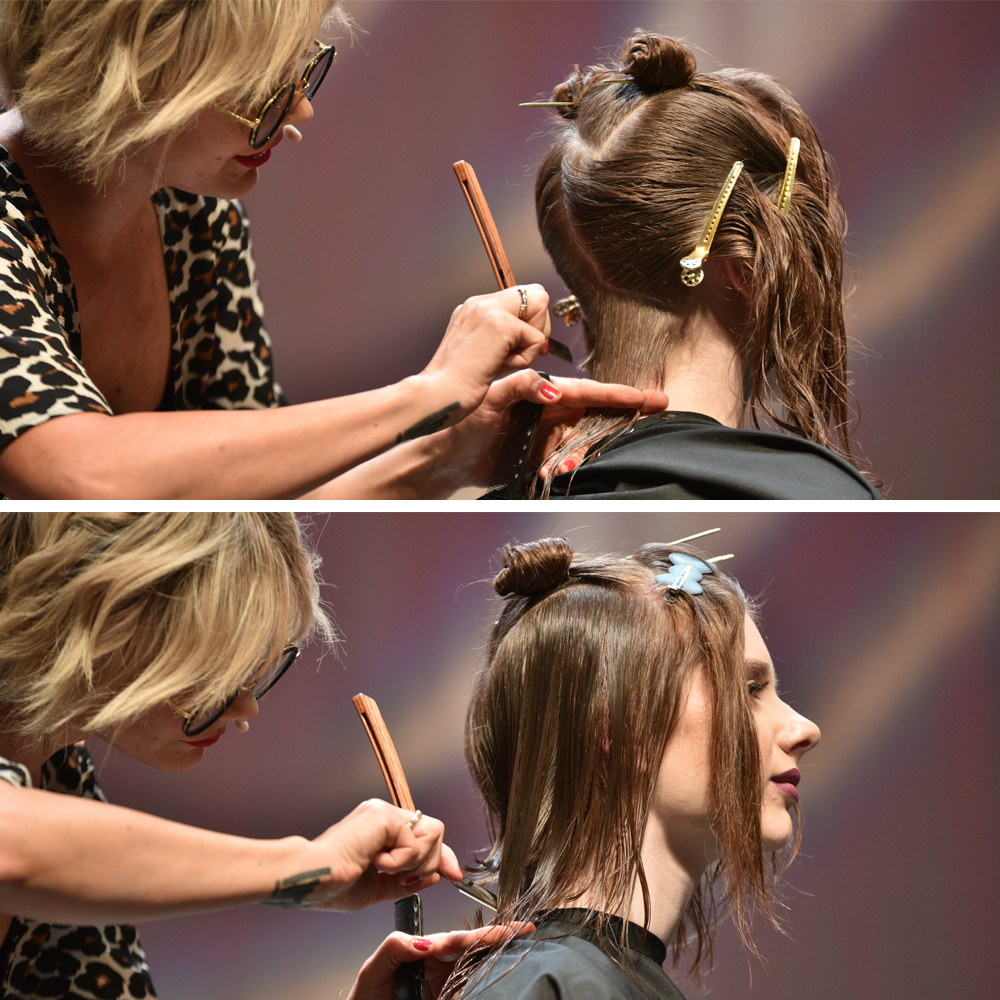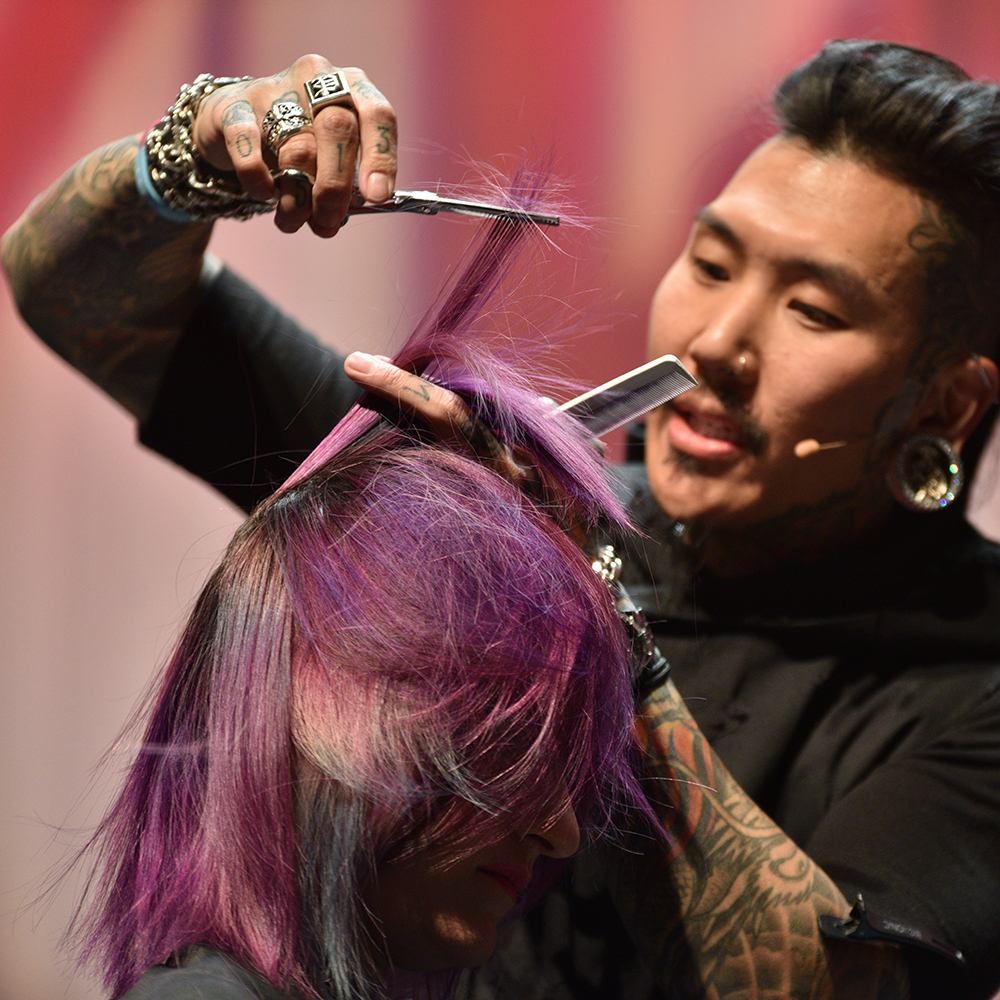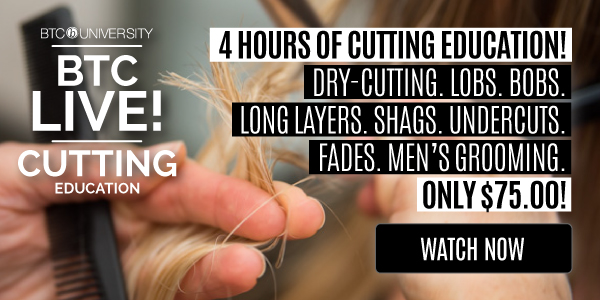3 Texturizing Techniques For Shags & Layered Haircuts
Create Texture Using A Straight Razor, Scissors & Texturizing Shears
Whether it’s mastering a new technique, learning how to work with different tools or simply keeping up with the trends—you can really never get too much cutting education! That’s why we hosted our first cutting-only show, BTC’s One Night Stand, in our hometown (Chi-Town!) to dish out LIVE education from the best cutters on Instagram. Here’s what we learned about texturizing with three different tools: a straight razor, scissors and texturizing shears!
Missed One Night Stand? No worries! Watch the full playback HERE.
Products Used
1. Razor-Cutting Internal Layers
Shall we shag now or later? Here’s how BTC Team Member Briana Cisneros (@brianacisneros) creates strong structure and soft texture to achieve the heavily-layered trend.

Get The Steps
- Apply Moroccanoil® Treatment as a cutting lotion.
- Then, section the hair following the head shape and create concave layers using a straight razor, working from the bottom to top. This will help collapse the shape and any unwanted heaviness.
- Working up the head, continue to open the razor stroke more (and more!) to build texture. Every new section should be slightly longer than the previous section—this will build a strong structure for the top layers to fall on top of, and the open stroke will create softness throughout the cut.
Tip For Consistent Razor-Cutting:
Look for negative space to check the consistency of your stroke pattern. After cutting a section using the razor, hold the hair and look for a consistent line—checking to see if the longest points are in line with one another.
2. Slide-Cutting On Short-Haired Clients
On short-haired clients, avoid removing too much length when texturizing. Here’s how TIGI master cutter Joel Torres (@joeltorresstyle) creates a piecey effect!

Get The Steps
- Apply TIGI Bed Head Motor Mouth™ Mega Volumizer With Gloss as a cutting lotion.
- Take a radial section at the crown, elevate the hair and slide-cut (opening and closing the shears) to create drastic separation and movement without removing too much.
- Joel recommends cutting the hair using the part of the shears that’s furthest away from the point and closest to the screw. This will help maintain control and high tension when slide-cutting.
3. Progressive Dry-Cutting
You’ve heard all about dry-cutting on Instagram by now. Here’s how BTC Team member and Matrix Educator Philip Wolff (@philipwolffhair) adds additional texture to a midlength haircut after it’s dry!

Get The Steps
- Blow-dry the hair. Once completely dry, Philip recommends refining and detailing by dry-cutting each section from top to bottom to create maximum texture throughout.
- Taking each section, use a progressive-cutting technique with texturizing shears, starting on the inside and working your way out. Body position tip: Stand behind the client for progressive-cutting and use the mirror to check your work.
- Here’s the technique: Elevate the hair the opposite way and over-direct each section, only working through the last third of the length. Cutting from underneath the section, progressively cut rows, scooping out weight and moving toward the ends.
More from
Matrix
-
Celebrity
The Best Beauty Looks At The 2024 Oscars
-
Blonde
The Biggest Hair Color Trends of 2024
-
Industry Events
Matrix Announces The Color Pop-Up Tour 2024
-
Award-Winning
Tailored
-
Matrix
Sandy Lived-In Blonde
-
Gifts
10 Hair Gift Sets Sure To Spread Joy This Holiday Season
-
Blonde
Blonde Ribboned Root Smudge
-
Hair Color
Bold Color Trends You Need To Know For 2024
-
Gray
Toning Relaxed Grays: How To Avoid The Yellow/Green Fade
-
Balayage
3 Tips For Balayaging 3C Curls
-
News
The Hottest Hair Product Launches Of Summer 2023
-
Blonde
6 Blonding Techniques To Save Your Client’s Hair
-
Product Launches
The Last Product Launch Before Summer 2023
-
Serums
Food For Soft Multi-Use Hair Oil Serum
-
Treatments/ Masks
Food For Soft Rich Hydrating Treatment Mask
-
Shampoos
Food For Soft Hydrating Shampoo
-
BTC Hair Trend Report
Met Gala 2023: The Hottest Hair & Beauty Looks
-
Awards Shows
Lil Nas X’s Natural Met Gala Curls
-
Hair Color
3 Permanent Color Hacks To Save Time + Make More Money
-
Blonde
Tap + Tone: How To Make The Money Piece Pop
-
Business
15 FREE Classes To Take For Hairstylist Appreciation Week
-
Toning
Tonal Control Pre-Bonded Acidic Gel-Cream Toners
-
Product Launches
Spring 2023’s Pro Beauty Product Launch
-
Celebrity
Editor’s Picks: 10 Hair Looks From The 2023 Oscars











